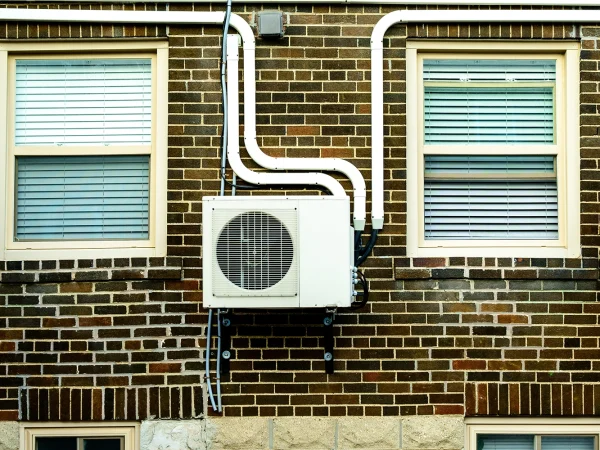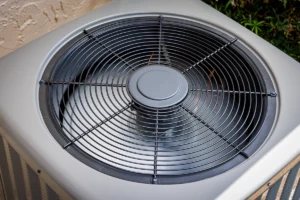Throughout my extensive professional career spanning approximately two decades of climbing through the residential infrastructure of Vancouver’s architectural landscape, I’ve accumulated an extraordinary wealth of knowledge regarding heating, ventilation, and air conditioning systems. The unpredictable meteorological patterns of the Pacific Northwestern region present unique challenges, alternating between precipitation and unprecedented temperature elevations. Today, I’m addressing one of the most frequently encountered inquiries from our community members: the potential development of microbial growth within mini split systems.
So Does Mold Build Up in a Mini Split?
Let me present this straightforward observation from my professional experience – ductless mini split systems can absolutely become susceptible to mold proliferation. Consider the parallel to neglected bathroom environments; these sophisticated climate control systems can similarly create optimal conditions for unwanted microorganism development when proper maintenance protocols aren’t implemented. This phenomenon is particularly prevalent throughout our service region, extending from the residential communities of Salmon Creek through to the established neighborhoods of Fisher’s Landing.
During the previous calendar month, I received an emergency service request from a residential client situated in close proximity to Vancouver Lake. While the external components of their system maintained an appearance of proper functionality, upon conducting a thorough internal inspection, the discovered conditions were extraordinarily problematic. This particular situation represents a frequently encountered scenario, especially considering our region’s dramatic meteorological fluctuations.
Understanding the Health Implications
In the relatively recent past, I provided professional assistance to a family residing within the Salmon Creek district who were experiencing inexplicable respiratory complications with their youngest household member. They had implemented numerous environmental modifications – including the replacement of bedroom furnishings, installation of atmospheric purification equipment, and comprehensive flooring renovations. Our subsequent investigation revealed their mini split system had been inadvertently distributing contaminated air throughout their living environment. Following our comprehensive sanitization procedures, they reported notable improvements in respiratory function within approximately seventy-two hours.
From our metropolitan center to the elevated residential districts, this narrative continues to repeat itself throughout our service territory. With the contemporary shift toward increased residential occupancy, many homeowners remain unaware of their climate control system’s potential contribution to indoor air quality concerns. Consider the fundamental role of your mini split system in atmospheric filtration – it processes every cubic foot of air circulating through your living environment.
Preventative Methods for Microbial Prevention
Allow me to share some professionally validated strategies for our local environmental conditions:
Implement regular dehumidification protocols during periods of elevated atmospheric moisture, particularly when coastal conditions influence our local weather patterns. Maintain comprehensive cleaning schedules, with particular attention during our region’s distinctive botanical pollination periods. Schedule professional system evaluations biannually – specifically before the onset of summer temperatures and winter conditions. Monitor environmental moisture levels, especially in properties situated near significant water features such as Lacamas Lake. Ensure proper condensation drainage systems remain functional throughout our characteristic precipitation season.
Within the previous seven-day period, I successfully preserved approximately three thousand dollars in unnecessary expenditure for a residential client in Fisher’s Landing who had incorrectly concluded complete system replacement was required. The actual solution involved thorough maintenance procedures and drainage system optimization. Their expression of appreciation was notably enthusiastic upon learning the actual financial implications.
Practical Maintenance Procedures for Homeowners
Professional certification isn’t necessarily required for implementing fundamental system maintenance protocols. Begin with essential procedures – atmospheric filtration components require regular attention. Following our characteristic spring pollination period, these components frequently accumulate substantial botanical matter.
Consider implementing these monthly maintenance protocols:
Conduct exterior component sanitization concurrent with regular household maintenance Evaluate filtration system conditions – electronic scheduling recommended Monitor operational acoustics for irregularities Ensure external unit ventilation remains unobstructed Verify condensation drainage system functionality
Regarding drainage systems – regular evaluation is paramount. I recently responded to an emergency service request in Hazel Dell where neglected drainage maintenance resulted in structural complications. These situations frequently occur outside standard business operations.
Professional Intervention Indicators
Certain circumstances necessitate professional expertise. Consider requesting professional evaluation when encountering:
Irregular mechanical operations producing excessive auditory disturbance Inappropriate moisture accumulation or distribution Inconsistent thermal distribution throughout your living environment Unexpected increases in energy consumption metrics Significantly reduced atmospheric circulation
My professional experience includes numerous instances where minor complications evolved into substantial expenses due to delayed intervention. A particularly memorable situation involved a Battle Ground resident who disregarded minor moisture accumulation until irreversible hardwood flooring damage occurred.
Annual System Optimization Strategies
Residing in Vancouver necessitates adaptation to unpredictable meteorological conditions. Your climate control system requires strategic maintenance protocols. Consider the automotive maintenance parallel – neglected routine service frequently results in catastrophic mechanical failure.
Regionally appropriate maintenance strategies include:
Scheduled professional system evaluations Regular filtration system replacement Continuous operational monitoring Prompt attention to emerging complications Comprehensive maintenance documentation
Professional recommendations typically include scheduling system evaluations during spring months preceding temperature elevations, and autumn periods before sustained precipitation begins. This scheduling strategy demonstrates consistent effectiveness throughout our service territory.
Our Professional Obersvation
Following approximately twenty years of professional service throughout Vancouver’s diverse communities, from Fruit Valley through Felida, preventative maintenance consistently demonstrates superior cost-effectiveness compared to reactive repairs. Each neighborhood presents unique environmental considerations – from Columbia River atmospheric effects to metropolitan microclimate variations.
While Pacific Northwestern meteorological conditions present significant challenges, properly maintained mini split systems demonstrate excellent reliability. Regarding microbial development potential – while the possibility exists, appropriate maintenance protocols effectively mitigate associated risks.
For additional information or professional assistance, contact Professor Heat Pump’s experienced technicians at (564) 888-5527. Our comprehensive understanding of Vancouver’s varied microclimates and neighborhood-specific considerations enables us to provide optimized solutions for your environmental comfort requirements.









